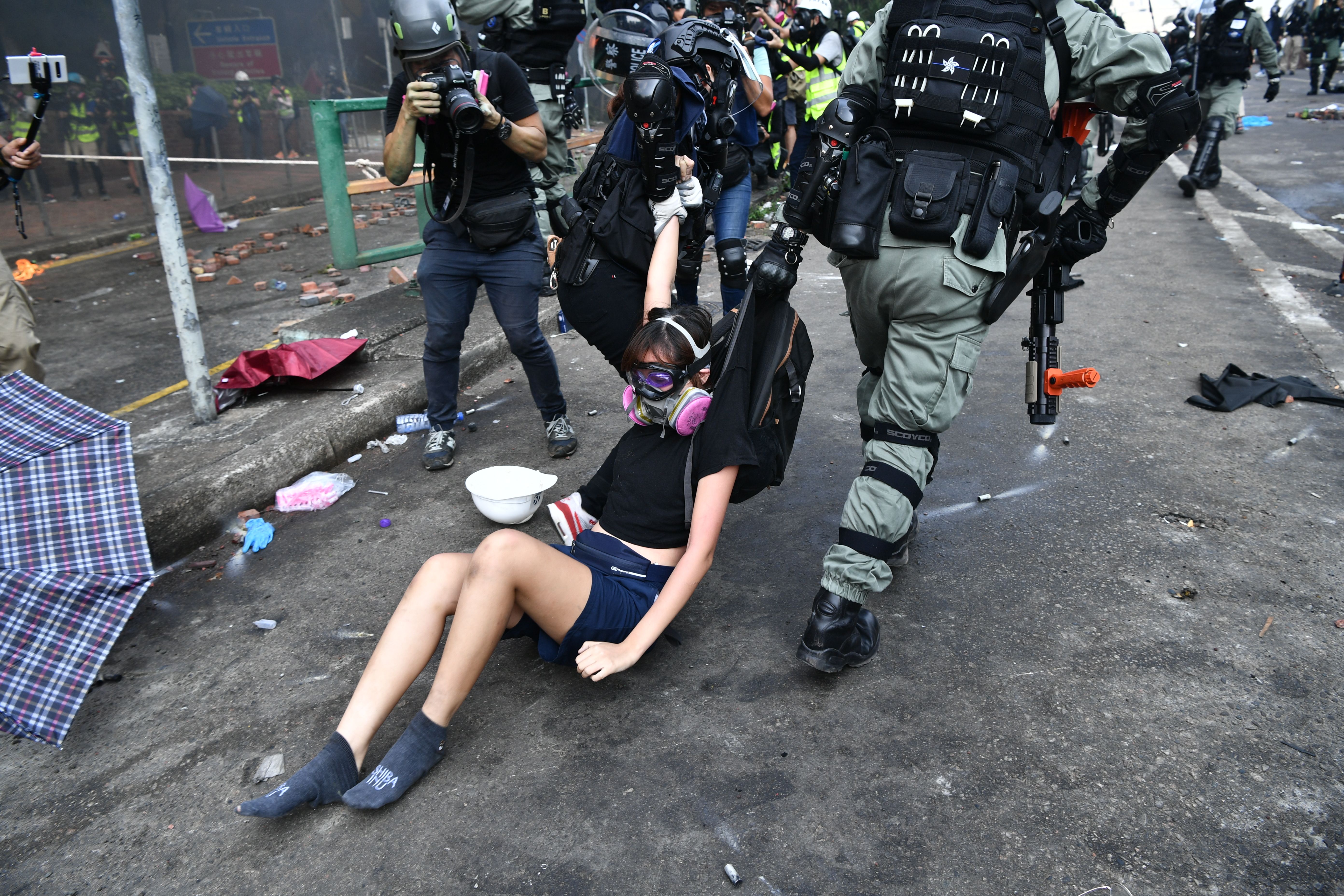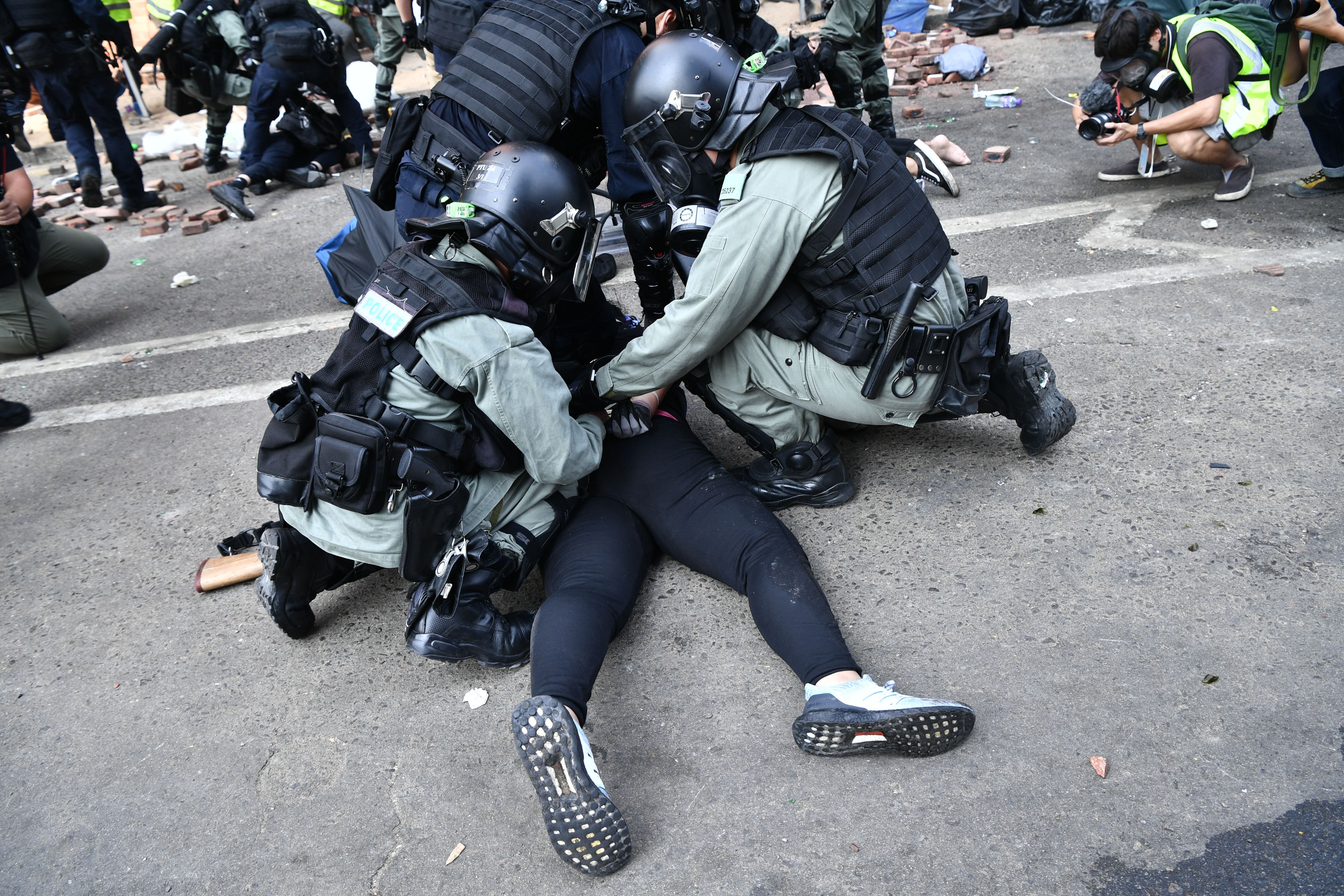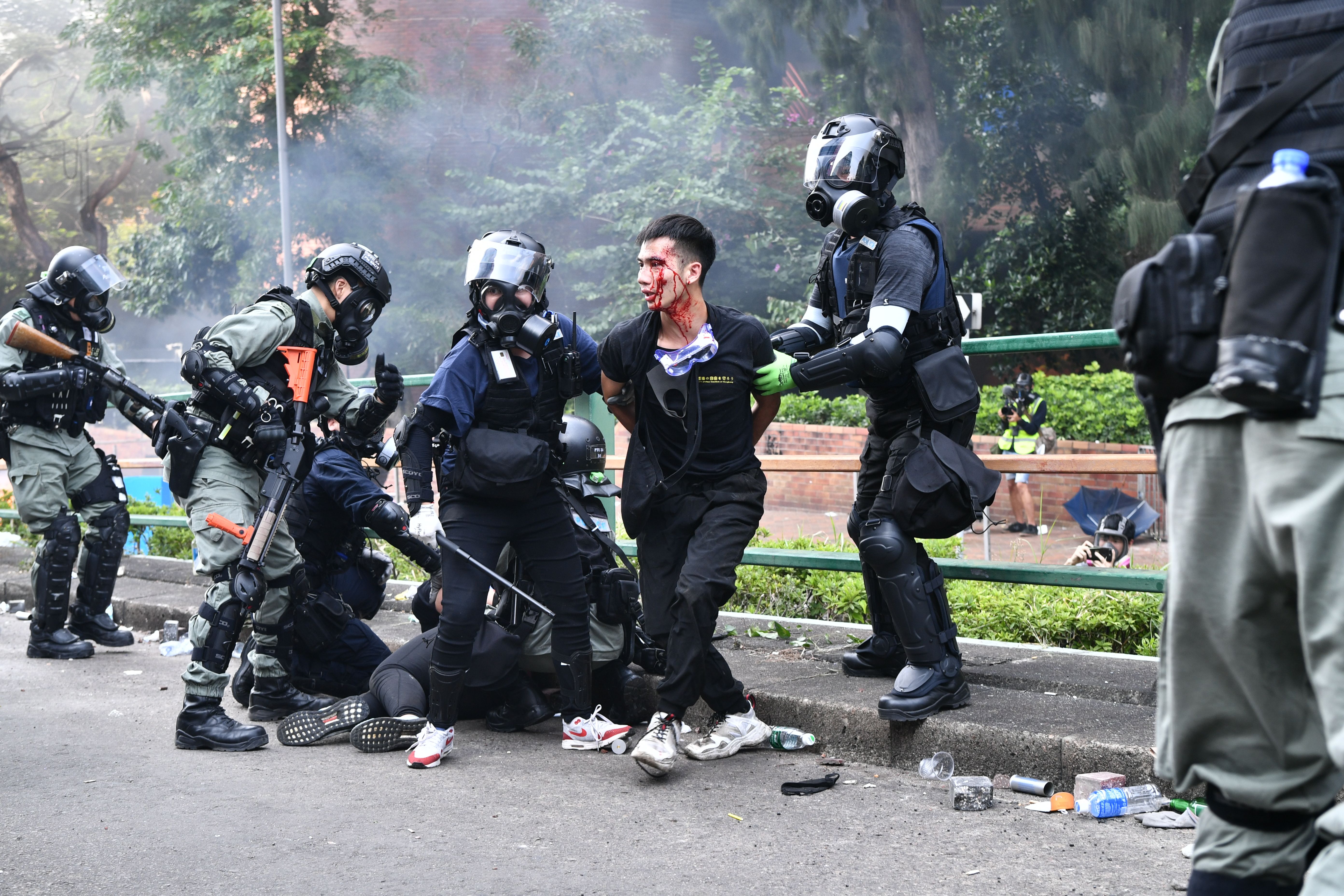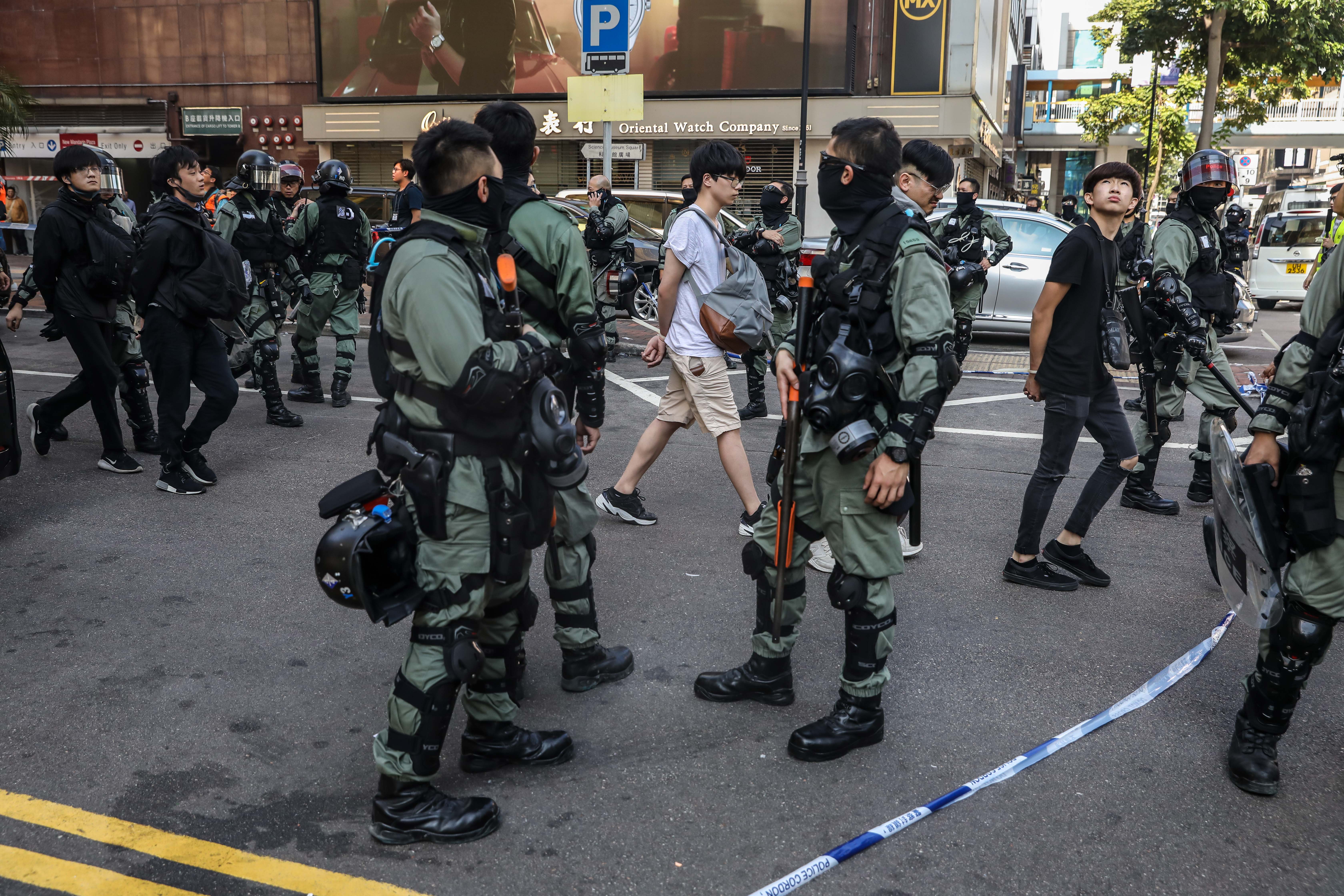
During the 24-hour siege of Polytechnic University, protesters have used a range of potentially lethal weaponry to hold off riot police.
The demonstrators have set up production lines of petrol bombs filled with a napalm-like substance, which they've then throw at police lines or at barricades to set them on fire.
Dramatic images from Sunday night showed enormous blazes started from huge numbers of petrol bombs being thrown at once.
Protesters also used a variety of bows and arrows, which were being fired from the balconies of Polytechnic University. One struck a police officer in the leg on Sunday, leading to his hospitalization.
Most dramatically, there have been makeshift catapults built out of bamboo and elastic, which protesters have used to slingshot objects at police lines.
At the fortified campus, CNN saw how protesters would first use bricks in the catapults to test their range, then switching to petrol bombs when they were hitting their targets.
Spotters on the roof also provided information to held the crews on the ground.







